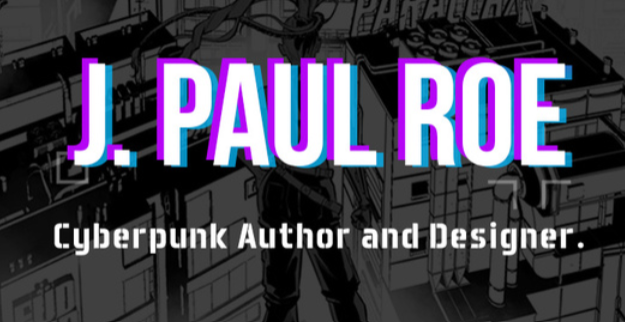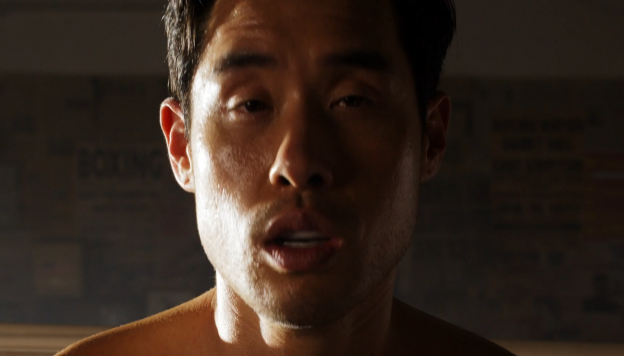Sneak peek of a sci-fi horror story that’s exclusive to my Patreon supporters! Go here to join and show your much appreciated support!
The Fringe
A brilliant guy once said you could track religion’s decline by looking at modern churches. Where temples were once built on sacred ground — ley lines and historic sites placed by divine guidance — now they pop up wherever strip mall space is cheap.
Like weeds through sidewalk cracks, dozens of churches crowd into a few city blocks, each one just another venue for some failed rockstar turned pastor to stroke his guitar and ego.
What better audience than one who’ll sit through anything to avoid hell, right?
Poignant observation from that guy, but he didn’t go on to talk about the state of bars, taverns, or pubs. And that’s where my little addition to the theory takes over.
Hundreds of years ago, a tavern was also a building with a greater purpose. It would be built in a place of importance, often serving as the heart of a town or village. It had a congregation — the kind who swayed instead of knelt, I suppose — and it provided a place of refuge for locals and passers-through.
But now, these places share the same fate as our modern-day temples. Any abandoned karate studio that isn’t snatched up by the pastor-of-the-week will probably be bought by some starry-eyed, bartending entrepreneur. And when he hangs that “open” sign on the door for the first time, you can bet that there will be five other libational purveyors within sight of it.
Soulless, heartless places, all of them. Chains and franchises with quirky names and kitschy crap hanging on the walls. Bars that care only about serving alcohol, not serving a purpose.
There’s no meaning to the drinking — only drinking. The spirituality of the spirits was lost somewhere.
There’s still hope, though. Honest refuges in actual places of importance.
I found this out firsthand after driving to Arizona to volunteer at the Federal Cleanup Project at the nuclear plant, Palo Verde. Huge facility, squatting in the desert like a dying god. Most powerful plant of its kind in the country — once. Now, Palo Verde is a physics nightmare trapped inside a so-called ‘Liminal,’ some bizarre tumor of invisible energy that devours the laws of nature.
Even the brainiacs in white coats who swarmed the Liminal like ants can’t figure out why reality bleeds at its edges.
An entire town had sprung up next to the Liminal, with the three reactor domes of Palo Verde in clear view across the Arizona landscape. They called this town Seaburn, after some senator who was visiting the plant when the Liminal formed last May. The energy surge turned him into a pile of goo, along with sixty other people who didn’t get pop-up towns named after them.
Anyway, there’s plenty of housing in Seaburn. Shops, too, and a couple of chapels — all in quonset huts, prefab containers, and FEMA trailers.
But there’s only one bar.
The Fringe, it’s called. And it was built by a Marine Corps veteran and retired tech CEO by the name of Carlos Pascal. The only building in Seaburn with a foundation, far as I can tell. A permanent brick structure amidst a Conex conurbation that otherwise embodies the idea of “transient.”
Yup, the Fringe is a beacon of permanence, which makes it both absurd and necessary in a place like this. And this bar is no national chain with half-price apps on Thursdays or old license plates hanging on its walls.
Actually, I take that back. There is one license plate on the red brick walls, and it came from inside the Liminal. The embossed numbers and letters are different every time you look at them — some unexplainable trick of broken physics that is very unsettling the first time you notice it.
Carlos insists it’s harmless, though he never mentions why it’s mounted behind reinforced glass, or why some regulars refuse to sit with their backs to it. Plenty of other drinkers have spent hours staring, hoping to see the numbers change, or work out why no two people see the same numbers on the plate in the first place.
A waste of time that’s more likely to drive a person insane than to satisfy their curiosity, but it beats the corny decor at your local Shenanigans, I suppose.
There’s plenty more odds and ends — emphasis on ‘odds’ — hanging on The Fringe’s walls. Some of it’s a helluva lot stranger. But it’s not the weirdness of the objects that’s most interesting. It’s the stories of how they got there.
Those stories are what make Carlos’ bar a special place. Sacred ground. And with everyone from scientists to so-called ‘clean-up volunteers’ like myself coming and going 24 hours a day, there’s a lot of stories.
Let me tell you about the first one I got to hear, about twenty minutes after I signed my paperwork with the FCP…
The Screaming Guy
I had to show my ID to get into The Fringe, but it had nothing to do with my age. I’d had gray hair for a decade. It started creeping in when I was twenty-five, and I was almost never carded once that set in.
No, it was my FEMA-issued volunteer ID that the armed guard on the door wanted to see. Only the people cleared to enter, study, or guard the Liminal were welcome in this particular bar.
As of twenty minutes ago, that included me.
Maria, the coordinator who’d issued me the ID, had told me I “absolutely had to” swing by the place before my first incursion into the wild-ass energy field on the other side of Seaburn’s concertina wire fence.
Hopefully all of my orders would be that easy to follow.
After walking in and taking a seat at the polished mahogany bar, I took a few glances around from my barstool. A large place, considering the location, and well-lit. The usual round wooden tables dotted the main room, and a large window on the side wall offered a view of the distant Palo Verde.
And the whole place smelled strangely…clean. I was picking up hints of the ionized air you’d breathe inside a hospital, though I couldn’t begin to fathom why.
While I’d taken notice of the various objects hanging around the bar — most of them in shadow boxes or metal display cases — I was more interested in The Fringe’s custom.
Over half the seats in the place were filled with men and women of varied, but explainable, backgrounds. Scientists with their short sleeves and neckties, probably from JPL or the Department of Energy. Feds from the FBI or the Secret Service in dress casual with their holstered Glocks. Off-duty border guards from Homeland Security, still in uniform after a presumably tedious day of patrolling the Liminal’s perimeter in their little Kubota vehicles.
And volunteers like myself, easily picked out because they had “the look”. I didn’t have that look yet. I didn’t even know what the glassy stare and tight jaw meant. But they stood out like sore thumbs.
“Johnny Walker Blue,” I said to the barman once he made his way over to me. “Rocks.”
He smirked, nodded, and reached for the whisky, showing off an arm that looked like it could just as easily carry me to the bottle rather than the other way around.
I chuckled as he poured. “If you don’t mind me saying, you’re what they call an absolute unit, man.”
He flashed a self-satisfied grin.
“Haven’t missed a workout in fifteen years.” His open hand shot across the bar. “Carlos. I’m guessing Maria sent you?”
“I’m Richard.” I shook his hand, then did the same to my drink to hear the comforting tinkle of ice on glass. “And yup, she sent me.”
“I trained her well. She might work for FEMA now, but this…this is the family business.” Carlos spread his bulging arms, smiling almost as wide as his wingspan.
“Family, huh?” I took a swig. “So Maria’s your daughter and the family business is…what? Not this place. This town didn’t even exist a year ago.”
“True enough. But The Fringe has been around a lot longer.”
My eyes widened. “Not here, though? There was nothing here.”
I was a volunteer — a paid one, if that makes sense — but I wasn’t blindly stumbling into this job. I’d read the reports, and they all said that the site where Seaburn was built had previously been an overgrown field with two trailers, a few junk cars, and about three hundred cats. Some kind of impromptu animal rescue, I guess.
“No, not here.” Carlos shook his head. “I moved it here. Brick by brick.”
I laughed, nearly choking on my last swig of whisky. “I can believe it.”
And I almost did believe it. It made about as much sense as any other explanation of how it got there.
“If you ever want to talk about what brought you here,” Carlos said, rapping his knuckles on the wooden bar, “you got my ear.”
“Volunteering,” I said, shrugging. “Clean-up team. Like everyone else here who doesn’t have a degree from MIT or a badge.”
Carlos grinned again. “No, I mean what made you sign up. It’s dangerous work, you know. Lotta people would say the pay ain’t worth it.”
I scoffed. “Well, by the time you’ve filled this glass again, I’ll have blown my entire sign-on bonus. So yeah, not for the money.”
Carlos poured. “Like I said, I’m good at listening.”
“Maybe some other time.”
Digging into your backstory is a serious no-no when the whole point of moving twelve-hundred miles and taking a dangerous job is to escape your past.
Thankfully, a loud crash from the front of the bar derailed the questioning. Carlos shot a vigilant glance toward the door just as I spun on my barstool to check it out.
“Start pouring, Carlos!” shouted one of three men smiling and fist-pumping their way toward us. “We struck gold!”
All three looked like they’d just spent the afternoon rolling in dirt, their cargo pants and earth tone button-up shirts showing plenty of holes and frayed edges.
Definitely volunteers. Anywhere else, they would have been given the literal bum’s rush as soon as they came through the door. At The Fringe, they were VIP guests.
Two of them descended on the barstools to my left, bringing with them the sweaty stink of a long incursion inside the Liminal. The third flanked me on the right.
“All yours, Carlos,” he said, slamming a canvas sack on the bar next to my empty glass. “And this better keep my whole crew drownin’ in whisky for a month!”
Carlos didn’t seem impressed, instead focusing his attention on the canvas sack. After staring at it for a long minute, his eyes darted back to the volunteer.
“Good for you, Benny,” he said, pointing to the canvas bag. “This is cleared, right?”
Benny scoffed right through his mile-wide grin. “C’mon, man…”
“I have to ask.” Carlos pulled the sack open with one thick finger and peeked inside. “You know how this works.”
“Yeah, it’s cleared. Got the papers in my pocket if you want to be a fascist about it.”
Carlos’ appraising look grew a bit darker. I wasn’t sure what kind of temper was being poked since I’d just met the man, but there was no doubt in my mind that messing with The Fringe’s owner was a bad idea.
And when he turned his fiery eyes back on Benny, even my blood went cold.
“You gonna make me call Gunny Vee,” he growled, “or are you gonna calm down and follow procedure?”
“Whoa, hoss,” Benny said, leaning back from the bar. “It’s just a damn baseball. The lab rats checked it out. Said they didn’t want it.”
Carlos leaned forward. “I can see what it is. What does it do?”
That piqued me right up. I knew people had been pulling interesting junk from the Liminal, but details were thin since social media was overflowing with bullshit theories and hoaxes.
“Throw it,” Benny said, his voice taking an edge of boyish mischief. “Find out.”
Carlos chuckled. “Ya know, Benny, ninety-nine percent of the people who I allow into this bar offer me a fair amount of respect. For them, I’d throw the damn ball. But you’re an anomaly, buddy. And that’s saying something in this place.”
Benny frowned. “So you won’t throw it?”
“No. You throw it. And if it breaks anything in my bar, that ball is going right up your ass.”
Benny’s frown took on a wicked curl, but he snatched up the canvas bag all the same. After removing a completely normal-looking baseball from inside of it, he spun on his heel and overhanded it directly at the nearest table of bespectacled scientists.
The physics nerds gasped and raised their arms, knees bashing the table and causing a wobbly racket…but the ball was unaccounted for.
My jaw dropped open. The ball had left his hand — no doubt about it — but I never saw it hit anything. The four scientists glanced at each other like confused meerkats, a couple of them with their hands still over their faces.
I looked back at Benny, and this time he was grinning squarely at me.
I raised an eyebrow, and he raised his throwing hand. The baseball was right there like he’d never thrown it.
“Pretty slick, right, hoss?” he asked me.
I coughed and cleared my throat. Hell, I’d seen street magicians do similar stunts. Sometimes the object would be on the other side of a window or something. Maybe this guy was just quick with his hands…
“Some kinda magic trick?” I asked.
“Pffft!” Benny blew out his lips. “I can tell you’re new — but damn, boy, you are new.”
Carlos sighed and Benny’s attention instantly snapped back to the bartender.
“I’ll give you a hundred bucks in credit,” Carlos said, folding his big arms over his dark denim apron.
All the recovered jocularity drained from Benny’s face. “What? You’re kidding me, Carlos!”
“It’s an Object, sure,” Carlos said, “but hold it up. Look at it.”
Benny did. He stared at the baseball like it had grown a face. “What?”
“When it’s sitting there, it’s just a baseball. Mounted on my wall, it’s…” Carlos pointed to me.
I blinked. “Just a baseball?”
Carlos smiled. “Correct. It’s interesting, Benny, but not a great display piece.”
With that, Carlos’ intense gaze snapped to the man on my left so fast I thought I heard a sonic boom.
“What is wrong with your partner?” he growled, narrowing his eyes at one of the men to my left.
The other volunteer was scratching his forearm like an angry lemur. The skin from wrist to elbow had gone bright red. And it looked…lumpy.
“Oh, shit, Daryl,” Benny said, pushing around me to grab his friend’s arm. “What did you do?”



